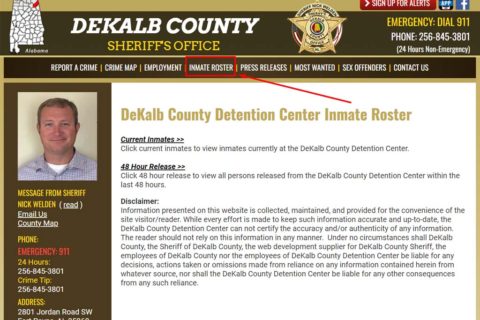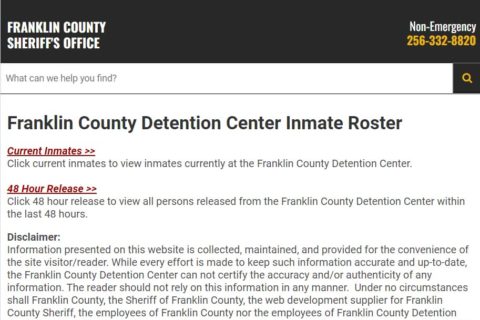To visit a prisoner in jail, you need to follow some rules that a correctional facility sets. Each correctional facility will set different rules, but basically the process for prison visit is the same. Before you can meet your loved one in prison, you must be approved by the facility first. If you’re not approved yet, you’re allowed to meet a prisoner.
There are sequences you should follow in order to be approved by the correctional facility. In this post, we will take one correctional facility in the United States, namely California Department of Corrections and Rehabilitation. Then, how to get your visit approved by one of California correctional facilities. Let’s see our post to find out the guide!
How to Get Approved to Visit a Prisoner Housed at California Correctional Facilities?
As we’ve mentioned, there are some stages you will need to follow to get approved to visit a prisoner incarcerated at one of California Correctional Facilities. Here’s how!
Stage 1: Get signed visitor questionnaire
All you need to get approved for a prison visit is to receive a signed visitor questionnaire. To get a questionnaire, you should apply for approval to visit by completing a Visitor Questionnaire (CDCR Form 106).
To get a visitor form, you can ask the prisoner to send the form to you. Of course, the prisoner should sign the form before sending it to you. Well, the signature definitely confirms the agreement of the prisoner to have the applicant added to his/her visiting list.
Stage 2: Complete the visitor form
After receiving a signed visitor form, you will have to fill out the form completely. The form will require the applicant to list all criminal convictions and all arrests, even if the arrest never referred to charges or conviction.
The CDCR form will do a background check for arrests and convictions when processing the applicant. The form will also deny approval to visit if the check displays an arrest or conviction not listed on the form. So, you must be thorough when completing the form.
To note, any contact with law enforcement probably results in a record of the contact in the California Law Enforcement Telecommunication System. It may also require clarification by the applicant.
If you cannot remember all the specifics about an arrest or conviction, make sure to clear out as specific as you can in providing the approximate date and the cause of the arrest.
Stage 3: Mail the visitor form
After you’ve completed the visitor form, you can then mail it to the visiting Sergeant and/ or Lieutenant at the facility where the prisoner is incarcerated. You can find mailing addresses on each institution’s page and the list of Adult Institutions.
It is known that most prisons will have different addresses for mail being delivered to prisoners and mail being sent to prison staff. You should ensure to get the address used for sending mail to prison staff, since the completed application must be delivered to the attention of ‘Visiting’ at the prison. The time of processing for visiting forms will vary by institution based upon the volume of forms received and also the number of staff approved to do the review process.
Stage 4: Receive notice of approval or disapproval
-
Approved
If you’re approved for visit, the prisoner will be notified and they will also notify you. After you’re approved, you will be listed in the computer as being an approved visitor for prisoners. Of course, you do not have to bring any proof of approval with you to the prison.
-
Disapproved
If you are not approved, you will then receive a letter from the prison setting forth the reason for disapproval. Then, the prisoner will receive notice of the disapproval, but he/she will not be given the reason.
If you’re denied approval for a visit, you will be able to reapply. Certainly, you can appeal the denial and/or the prisoner will probably appeal the denial. If the reason for the denial is based on inaccurate or incomplete information on the visitor form, you can then resubmit an accurate and complete visitor form.
Sometimes, the reason for denial is that the prison allows additional information. In those cases, you may need to resubmit the form and provide the additional information.
Okay, those are step-by-step to get approved to visit a prisoner housed at California Correctional Facilities.
How to Appeal a Notice of Disapproval?
You can really appeal by writing to the Warden at the prison if you really do not agree with the reason given for the disapproval. After receiving the appeal, he/she will be required to respond to your appeal within 15 working days of receiving the appeal.
If you’re not satisfied with the response or action from the correctional facility, you can refer your appeal, with a copy of the institution’s decision, to the Director of the Division of Adult Institutions or his/her designee at:
California Department of Corrections and Rehabilitation,
Division of Adult Institutions
P.O. Box 942883, Sacramento, California, 94283-0001
Attention: Director, Room 351-N
A written response to appeals that is addressed to the Director should be provided within 20 working days from the date of receipt. Of course, the prisoner will independently appeal the denial of approval by taking advantage of the normal prisoner appearance process within the prison.
Are Emergency or Hardship Visits Allowed at California Correctional Facilities?
Occasionally, emergency or hardship visits will be allowed before an individual has been approved to visit. The visits are at the discretion of prison staff (commonly the Visiting Sergeant or Lieutenant) and are commonly to accommodate an unexpected visitor traveling from a distance in excess of 250 miles.
It’s important to note, you shouldn’t rely on receiving approval to visit without going through the normal visiting application process. If it is possible, you need to plan ahead for visits and have each adult who may want to visit submit applications before they embark on a trip which will include a visit to a prisoner.
Keep in mind, after approval, you need to wear clothing which is appropriate for a large gathering of men, women and young children. If you wear inappropriate clothing, it may result in your being denied visitation.

A bookworm and researcher especially related to law and citizenship education. I spend time every day in front of the internet and the campus library.




